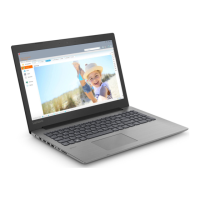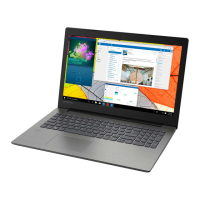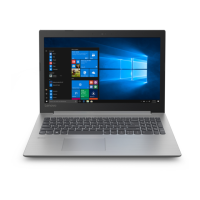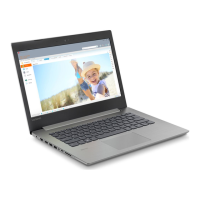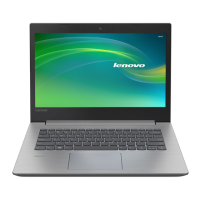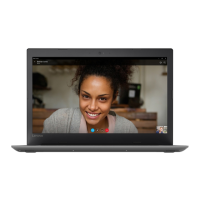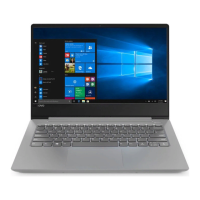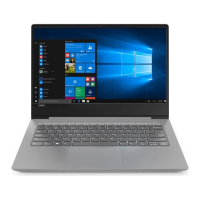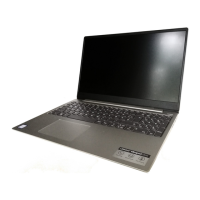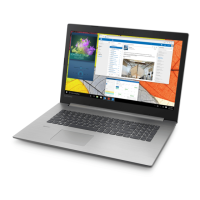
Do you have a question about the Lenovo ideapad 330-17IKB and is the answer not in the manual?
| RAM | Up to 16GB DDR4 |
|---|---|
| Operating System | Windows 10 Home |
| Weight | 2.8 kg (6.17 lbs) |
| Processor | Up to 8th Gen Intel Core i7 |
| Display | 17.3" HD+ (1600 x 900) or FHD (1920 x 1080) |
| Storage | 256GB SSD |
| Graphics | Integrated Intel UHD Graphics 620 or NVIDIA GeForce MX150 |
| Battery | 30Wh |
| Ports | 2 x USB 3.0, HDMI |
| Wireless | WiFi 802.11 ac, Bluetooth 4.1 |
Diagram illustrating the top view of the computer, labeling key components like camera, display, and ports.
Details on using the keyboard, including numeric keypad and function keys for system control.
Explanation of hotkeys and their functions for quick access to system settings and features.
Describes how to use function key combinations for specific operations and features.
Diagram illustrating the left-side view of the computer, showing ports like AC adapter, HDMI, and USB.
Explains the battery and charging status indicators, their colors, and meanings.
Details on RJ-45, HDMI, USB 3.0, and USB 2.0 ports for network and device connectivity.
Information on combo audio jack, Type-C port, and memory card slot functionality.
Details on the Novo button and power status indicator for system control and monitoring.
Guide on how to connect USB devices, driver installation, and safe removal procedures.
Diagram illustrating the right-side view of the computer, showing optical drive and security slot.
Instructions on inserting and removing memory cards, supported types, and precautions.
Diagram illustrating the bottom view of the computer, showing speakers and ventilation slots.
Steps for initial operating system setup, including license agreement, internet, and user accounts.
Overview of the Windows 10 interface, focusing on the Start menu and its functions.
Explanation of the Action Center for managing notifications and common settings.
Guide on using Task View to manage multiple desktops and switch between them.
Instructions on how to put the computer to sleep or shut it down properly.
Steps to enable wireless connection and connect to available wireless networks.
Guidance on accessing the Windows Get Help app for troubleshooting and support.
Explanation of the Push-button reset feature for restoring the operating system to its original state.
Information on determining if Windows uses Compact technology and its implications for storage.
Guidance on locating and downloading drivers for computer hardware.
A list of common questions and answers related to computer usage and troubleshooting.
Explanation of the BIOS setup utility, how to start it, and change boot modes.
Troubleshooting steps for common display issues like blank screen or distorted images.
Solutions for issues related to the computer entering sleep mode unexpectedly or not waking up.
Troubleshooting common display panel issues such as blank, unreadable, or distorted screens.
Steps to resolve issues with no sound or incorrect audio playback from the computer.
Troubleshooting common battery issues, such as unexpected shutdowns or operation after empty status.
Solutions for general computer issues including unresponsiveness and external device connectivity.
Information on Customer Replaceable Units (CRUs), their replacement, and related cautions.
Step-by-step instructions for replacing the optical drive on specific computer models.
